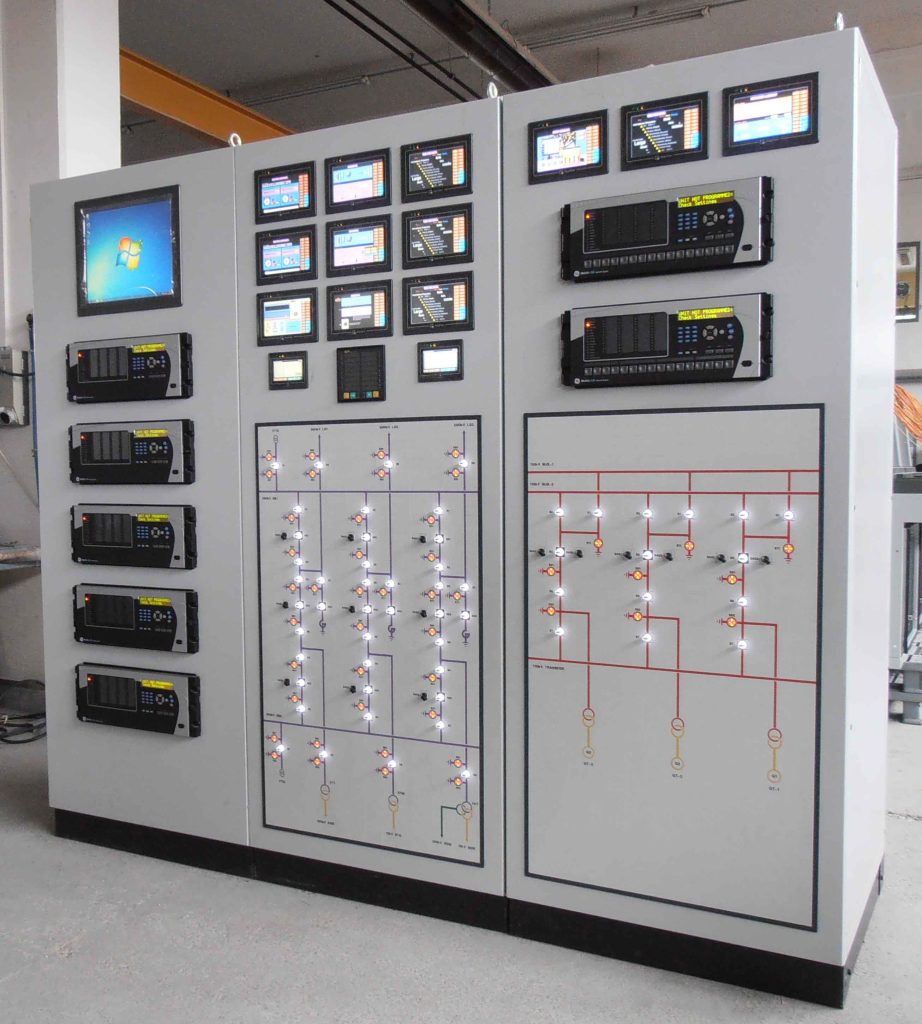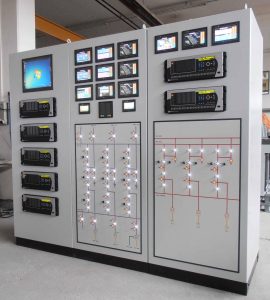
Panels
Automation panels are sophisticated control systems designed to manage and monitor industrial machinery and processes. They consist of various components such as programmable logic controllers (PLCs), human-machine interfaces (HMIs), relays, and sensors that work together to automate operations. These panels provide centralized control, enabling operators to oversee and adjust processes in real time, improving efficiency and reducing the need for manual intervention. They enhance safety, minimize human error, and optimize performance by offering precise control over parameters like temperature, pressure, and speed. Commonly used in manufacturing, energy, and other industries, automation panels ensure streamlined, reliable, and cost-effective operations.

An IoT Integrated Control Panel enables centralized monitoring and control of connected devices and systems. It provides real-time data visualization, automation, and remote management, enhancing efficiency and decision-making. By integrating various IoT sensors and devices, it simplifies complex operations, improves security, and optimizes energy and resource usage across industries.

PLC & HMI automation integrates Programmable Logic Controllers (PLC) with Human-Machine Interfaces (HMI) for streamlined industrial control. PLCs manage real-time processes, while HMIs provide a user-friendly interface for monitoring and adjustments. This combination enhances system efficiency, precision, and remote management, improving operational control in manufacturing and industrial settings.

Compartmentalized Motor Control Center (MCC) Panels house motor control units in individual compartments for enhanced safety, organization, and maintenance. Each section isolates circuits, reducing downtime and the risk of electrical faults. Widely used in industrial applications, they improve operational efficiency, modularity, and ease of access for system control and protection.

SCADA Integrated Control systems enable real-time monitoring, data acquisition, and automation of industrial processes. By connecting sensors, controllers, and interfaces, SCADA provides centralized control, remote access, and detailed analytics for improved decision-making. This integration enhances system efficiency, reduces downtime, and optimizes resource management across various industries and infrastructures.

Non-Compartmentalized Motor Control Center (MCC) Panels house multiple motor control units without individual compartments, offering a more compact and cost-effective design. While less isolated than compartmentalized MCCs, they provide efficient control and protection for motors in industrial applications. These panels are ideal for smaller systems with lower maintenance and safety requirements.

Variable Frequency Drive (VFD) Panels control motor speed by adjusting the frequency and voltage of the power supply. They enhance energy efficiency, reduce mechanical stress, and allow precise control of motor operations. Commonly used in HVAC, pumps, and conveyors, VFD panels optimize performance and extend equipment lifespan in industrial applications.

Reverse Osmosis (RO) Panels control and monitor RO water filtration systems, ensuring efficient removal of impurities. These panels automate operations like pressure regulation, flow control, and membrane cleaning. Used in water treatment plants, they enhance system reliability, improve water quality, and reduce manual intervention for optimized filtration performance.

Automatic Power Factor Control (APFC) Panels optimize power factor by automatically regulating the reactive power in electrical systems. They reduce energy losses, enhance efficiency, and lower electricity bills by minimizing penalties for poor power factor. APFC panels are widely used in industries to improve power quality and stabilize electrical loads.

Fire Fighting Control Panels manage and coordinate fire suppression systems, including alarms, pumps, and sprinklers. They provide real-time monitoring, activation, and status updates, ensuring rapid response to fire emergencies. These panels enhance safety, streamline emergency procedures, and ensure reliable operation of fire protection systems in various facilities.

Pneumatic and Instrumentation Panels control and monitor pneumatic systems and instrumentation. They integrate sensors, valves, and controllers for precise automation and measurement of pressure, flow, and other variables. These panels ensure accurate system performance, streamline operations, and facilitate maintenance in industrial applications, enhancing efficiency and reliability.

Metering Panels provide real-time monitoring and measurement of electrical parameters such as voltage, current, and power consumption. They facilitate accurate billing, system diagnostics, and performance analysis. Often used in utilities and industrial settings, these panels ensure efficient energy management, support troubleshooting, and enhance operational visibility and control.
